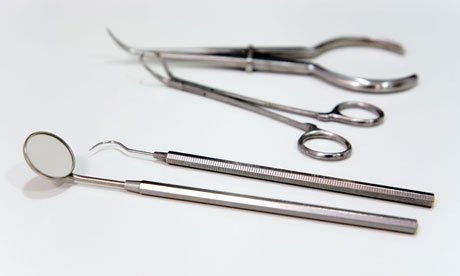A BEAUTIFUL SMILE IS JUST AROUND THE CORNER
SET APPOINTMENT
Pediatric Dentistry - Did You Know?
A WebMD Article
pediatric dentistry and your child:
The American Academy of Pediatric Dentistry and the American Dental Association recommend that a child’s first visit to the dental office occur at approximately six months or when the first tooth erupts. If teeth do not erupt by the end of your child’s first year, you should see a dentist.
Parents should wipe an infant’s gums and teeth after each feeding, using a moist washcloth or gauze Pad. When one or more teeth appear, parents should brush child’s teeth with a children’s toothbrush and water. Unless it is advised by your dentist, do not use fluoridated toothpaste until age 2-3. Once your child is preschool-age, start using fluoride toothpaste. Don't cover the brush with toothpaste; a pea-sized amount is just right. Young children tend to swallow most of the toothpaste, and swallowing too much fluoride toothpaste can cause permanent stains on their teeth.
According to the National Institute of Dental and Craniofacial Research, Baby Bottle Tooth Decay, also known as “early childhood caries,” is caused by prolonged contact with almost any liquid other than water. Milk, formula, juices, and other sweet drinks such as soda all have sugar in them. Sucking on a bottle filled with liquids that have sugar in them can cause tooth decay.
TO HELP PREVENT BABY BOTTLE TOOTH DECAY:
Never put your child to bed with a bottle. By 7 or 8 months of age, most children no longer need feedings during the night. Children who drink bottles while lying down also may be more prone to getting ear infections. Only give your baby a bottle during meals. Do not use the bottle as a pacifier; do not allow your child to walk around with it or to drink it for extended periods. These practices not only may lead to Baby Bottle Tooth Decay, but children can suffer tooth injuries if they fall while sucking on a bottle.
Teach your child to drink from a cup as soon as possible, usually by 1 year of age. Drinking from a cup does not cause the liquid to collect around the teeth, and a cup cannot be taken to bed. If you are concerned that a cup may be messier than a bottle, especially when you are away from home, use one that has a snap-on lid with a straw or a special valve to prevent spilling.
Don’t put your child’s pacifiers, spoons, or other things in your mouth. Infants acquire bacteria and germs in their mouths from other people. When you clean off your baby’s pacifier or other item in your own mouth, you transfer bacteria directly it which then gets into your baby’s mouth. This bacteria makes the baby’s teeth more susceptible to tooth decay.
FLUORIDE TREATMENT:
Fluoride is a substance used to prevent or reverse the early signs of dental caries (tooth decay). Research has shown that there are several ways that fluoride achieves its decay-preventative effects. It makes the tooth structure stronger so teeth are more resistant to acid attacks. Acid is formed when the bacteria that live in the plaque on your child’s teeth breaks down sugars and carbohydrates from your child’s diet. Repeated acid attacks can break down the tooth structure, which causes caries. There are many communities that have fluoride in their water supply. Water fluoridation can reduce the incidence of tooth decay by about 20 to 40%. You can ask your local water company if they add fluoride to the water in your community. A dentist may recommend fluoride supplements if fluoridated water is not available in your community.
SEALANTS:
Sealants are substances used in the prevention of tooth decay. It has been shown to be a very effective method to prevent cavities on the occlusal surface (biting surface) of teeth. While fluorides have been influential in the decline of decay on smooth tooth surfaces, sealants are very effective in the prevention of decay on pit and fissure (“nooks and crannies”) surfaces of the teeth. They are thin, clear or tinted plastic coatings painted on the biting surfaces of permanent posterior teeth. Sealants are particularly important for children who have a high risk for decay. The frequency for sealant placement will vary by the individual, but some standards for application of sealants are: Applied mainly on permanent molars (1st and 2nd);Teeth should be non-restored;Once per tooth every 5 years up to the age of 19.
Ask if sealants are appropriate for your child.
